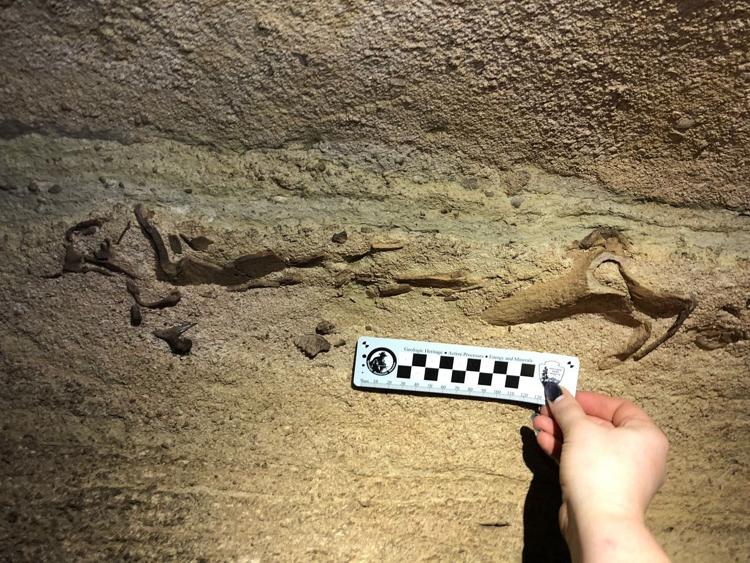Millions of Years Ago, Mammoth Cave May Have Been Home to Sharks
A recently-discovered shark jaw fossil in Mammoth Cave. (Image via Mammoth Cave National Park Instagram)
February 5, 2020
Paleontologists have uncovered the fossilized remains of nearly 20 different ancient species of shark in Mammoth Cave National Park, including a large section of jaw cartilage that may indicate a fossilized shark head buried behind the cave’s walls.
Last year, Rick Olsen and Rick Toomey, a team of scientists with the park, were mapping an undisclosed part of the cave when they found what appeared to be fossilized teeth. The team sent photos to paleontologist and National Park System research supporter John-Paul Hodnett in Maryland, who then arranged a trip to Mammoth Cave in November to investigate the findings himself.
There, the team discovered a fossilized shark jaw approximately 2.5 feet long, as well as over 100 other fossilized shark specimens–mainly teeth and fins. Shark skeletons are made of cartilage whereas their teeth are bone, which is why fossilized shark cartilage like the jaw found in the cave are a much less common find than teeth.
According to Hodnett, the shark belongs to the species Saivodus striatus, an ancient species approximately the size of a Great White shark. Little is known about the species and Hodnett is hopeful that the newly discovered fossils will shed light on how it lived.
In interviews with CNN and Louisville television station WDRB, Hodnett said that almost no other fossils have been found at the same layer of rock in North America.
“Mammoth Cave plays an important role in like filling a big puzzle piece for what we know about this region in terms of fossil fish,” he told WDRB.
“There’s hardly ever any record at all of sharks’ teeth coming from these rocks…This is a brand new record of sharks from a particular layer of time,” Hodnett told CNN.
Saivodus striatus lived between 330 and 340 million years ago in the Late Mississipian geologic period, a time when North America was covered in ocean. The newly discovered fossils suggest that the area that is now Mammoth Cave was originally populated by several species of sharks. The organisms that became fossilized were originally covered in sediment that eventually formed the cave itself over millions of years.
“We’ve literally just scratched the surface,” Hodnett said.
“Mammoth Cave has a rich fossil shark record and there’s still much more to uncover,” Hodnett told CBS News.
The National Park Service has not disclosed the location of the fossils due to past issues with vandalism and theft, but researchers say that the specimens will eventually be put on display in the park. Hodnett and others will present their findings at a Society of Vertebrate Paleontology meeting in October.
Mammoth Cave National Park lies northeast of Bowling Green near Cave City and Cedar Spring. Directions to the park & cave system can be found on the National Park Service’s website.


